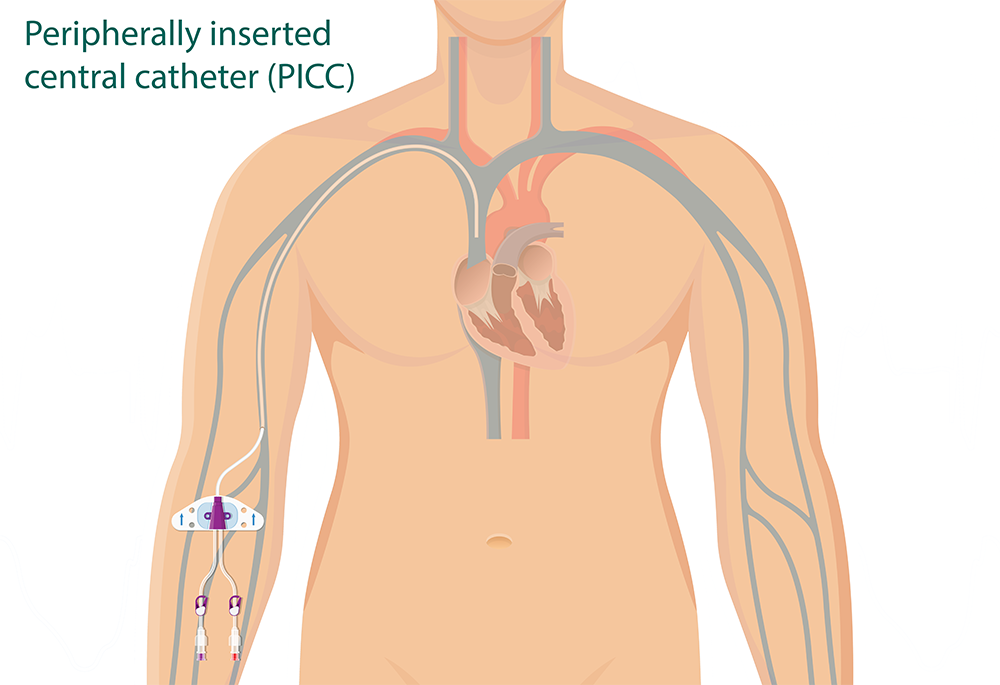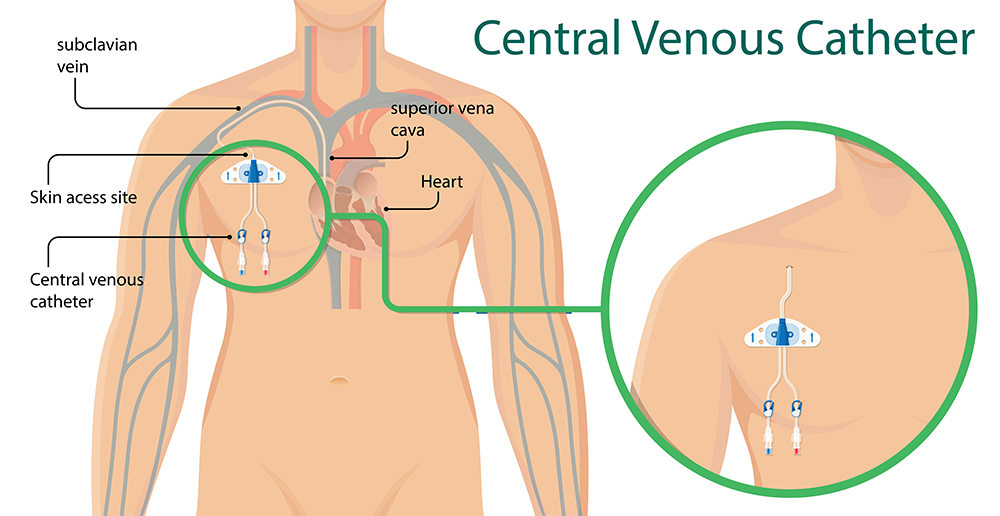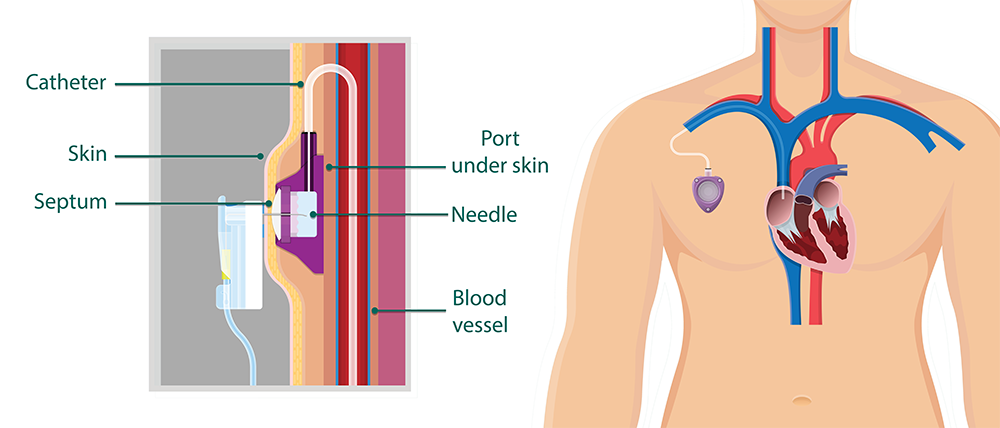Central venous access devices (CVADs) are used to provide an access point to enable the administration of fluids, medication and other therapies into the bloodstream.
Our team of interventional radiologists are experts in minimally invasive procedures including procedures for long term vascular access such as tunneled venous catheters and ports for chemotherapy.
What is Venous Access?
Venous Access is when the interventional radiologist inserts a thin, flexible tube, known as a catheter, into a central vein. The central veins are the large veins within the chest and abdomen. Usually the tip of the catheter is positioned on the right side of the body, within the superior vena cava, located just above the heart.
With a catheter in place, treatments such as chemotherapy or antibiotics can be given through the catheter (CVCs) over a period of time without the need for repeated venous punctures with a needle into the arm thereby greatly improving quality of life. A catheter can also be used when regular blood samples need to be taken for blood transfusions and other medical conditions that need access to a vein over days, weeks or months.
What Types of Catheters Are Used?
Many different types of catheters may be used for venous access. We can work with you and your doctor to decide which type is best for you.
Peripherally-inserted central catheters, often called PICCs, are catheters that are inserted through a vein in the arm, with the tip connected to a central vein.
Non-tunneled central catheters are placed under the skin through a large vein usually in the neck or groin and are designed to be temporary.
Tunneled central catheters are thin catheters that are placed in the vein for long term use. It is most commonly placed in the neck (internal jugular) but also may be placed in the groin, liver, chest or back. It has a cuff attached to it that allows tissue and skin to grow around it, giving the line more stability.
Implantable ports are a type of catheter with a small reservoir or port attached to it. It is used to give long term access to administer chemotherapy or medicine or to take blood. Implantable ports can also be called portacaths or subcutaneous ports. They are made of a soft, flexible silicone tube and have two parts. One is the catheter, which is placed in a large vein in the chest and the port which is attached to this catheter. After the port is put into place you may notice a small bump.
Preparing for Vascular Access Device Placement
The procedure takes about 30 minutes. You will receive specific pre-procedure instructions to prepare for your procedure. You may be given medications to ease the pain and make you a little drowsy, but you will remain awake. A local anesthetic is used to numb the proposed site where the catheter or port will be inserted so you remain comfortable.
PICCs (Peripherally Inserted Central Catheter)
- Before the procedure your veins will be located using an advanced ultrasonography machine or fluoroscopy machine.
- If you are receiving a PICC, after numbing the area, our specialist will make a small incision that will serve as the entry point for a tiny catheter. Using the guidance of ultrasound and X-ray images, the venous access catheter is placed.
- After placement the PICC is covered with a small dressing to prevent infection.
Tunneled Central Catheters
- If you are also receiving a tunneled catheter, a second small incision is made at the proposed exit site.
- A small device is used to create a small tract or tunnel beneath your skin that extends between the two small incision sites. The catheter is placed through this tunnel. Stitches and firm adhesive tape may be used to secure the portion of the catheter which is outside of your skin.
Venous Ports
- If you are receiving a port, the team will mildly sedate you, numb the area and make a small incision, and then place the port in a skin pocket.
- After placement, they will put a small dressing. You will be given instructions about how to care for the implantation site while the incision heals. Pain medication may be given if it is necessary.
Your newly inserted venous access catheter or port will be tested to make sure that it is working correctly before you leave. All incisions will be properly cleaned, and adhesive dressings will also be applied.
Recovering from a Vascular Access Device Placement
After your procedure, you can return home the same day. In most cases, you can return to normal activity.
If you have received medications that made your drowsy for the procedure, it may take a few hours for the effects to wear off.
Venous access is considered a relatively safe procedure and complications are extremely rare. You may have slight bleeding at the site, but you will be closely monitored by our team.
Schedule a Consultation at One of Our Oncology Centers
If your doctor has recommended that you need central venous access devices (CVADs) to provide an access point to manage your condition, you can contact us and discuss the treatment with a specialist. At USA Oncology Centers, we can help evaluate your condition during an initial consultation and discuss selection that will be tailored to your specific care plan.
You can make an appointment online 24/7 with our convenient scheduling form or check for a location near you with our interactive map. For your convenience and safety during the COVID-19 pandemic, we are now offering telemedicine consultations. We are also following strict precautionary measures to protect the health of our patients during clinic visits.
We look forward to being a part of your cancer team and are dedicated to providing you with the highest standard of care and compassion.



